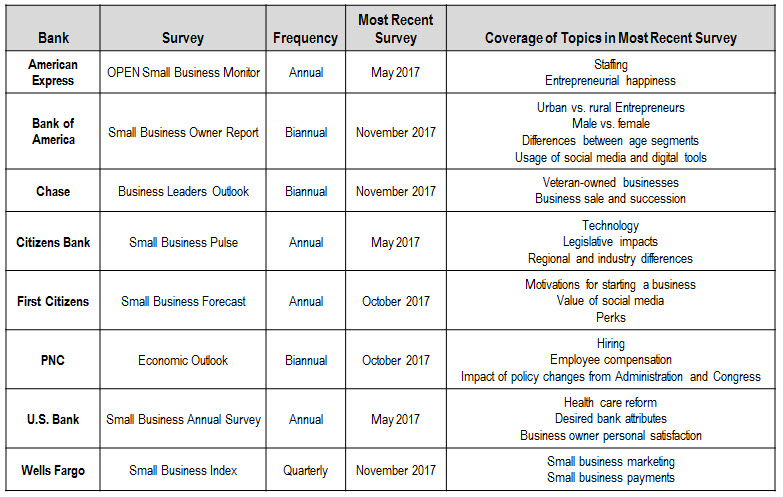Banks looking to build awareness and engagement with small business owners should look to leverage strengths in specific markets and develop targeted marketing campaigns and other outreach programs. The following are some of the most popular ways that banks see to engage with small businesses at the local market level.
Leverage the branch network.
- Small businesses continue to be among the heaviest users of bank branches, and leading banks deploy dedicated small business bankers in branches to provide expert advice and support. This past January, as part of a broader commitment to its brand network, Chase announced plans to hire 500 small business bankers.
- Banks use their branch network to bring small business campaigns to life. Last month, Santander Bank rolled out its Small Business Month campaign, which featured in-branch merchandising and in-branch events across its network of more than 600 branches.
- Some banks even allocate space in their branches for small businesses to use. Citizens Bank recently created open space in its Chestnut Hill, Massachusetts, branch that small business clients can use to conduct meetings with customers and business partners.
Target campaigns at local markets.
- Capital One launched its We Work as One campaign, designed to promote and empower local businesses in select markets (New York City, Chicago, San Francisco, Denver and Boston) where it operates local Capital One Cafes.
Foster small business entrepreneurship.
- Some banks include small business entrepreneurship as part of their broader community outreach. For example, Santander Bank’s Cultivate Small Business initiative promotes small business ownership in underserved communities in Greater Boston.
- Banks also recognize small business achievement with contests and awards. In May 2018, Citizens Bank announced Small Business Community Champion Award winners in Boston, Philadelphia and Pittsburgh.
Partner with local groups that promote small businesses.
- Banks look to develop partnership with a host of local organizations that represent small business interests. Prominent among these organizations are the more than 3,000 chambers of commerce located through the U.S. Many banks team up with local chambers to carry out joint initiatives, such as hosting member events and carrying out surveys. Last November, Webster Bank hosted a cybersecurity event in partnership with Greater Boston Chamber of Commerce.
Publish market-specific versions of small business surveys.
- These surveys enable banks to highlight their presence in and commitment to particular markets. In addition, market-specific findings can be leveraged by small business bankers to engage with small business owners in these markets. Banks that have recently published market-specific versions of small business surveys include Bank of America, PNC and U.S. Bank.
To develop and implement an effective small business-focused local market strategy, banks need to:
- Identify and profile key local markets (including the bank’s in-market presence and competitive environment, as well as the size and composition of the small business market)
- Prioritize the markets for targeting
- Tailor marketing programs based on goals and local market conditions
- Gain input and buy-in from key local stakeholders, including branch managers and in-branch small business specialists
- Track campaign performance, and distill learnings for use in other local markets and future campaigns
